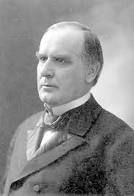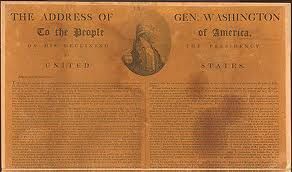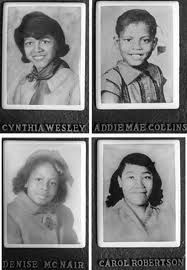This is your morning Open Thread. Pour your favorite beverage and review the past and comment on the future.
Find the past “On This Day in History” here.
September 14 is the 257th day of the year (258th in leap years) in the Gregorian calendar. There are 108 days remaining until the end of the year.
On this Day in 1901, U.S. President William McKinley dies after being shot by a deranged anarchist during the Pan-American Exposition in Buffalo, New York.
 President and Mrs. McKinley attended the Pan-American Exposition in Buffalo, New York. He delivered a speech about his positions on tariffs and foreign trade on September 5, 1901. The following morning, McKinley visited Niagara Falls before returning to the Exposition. That afternoon McKinley had an engagement to greet the public at the Temple of Music. Standing in line, Leon Frank Czolgosz waited with a pistol in his right hand concealed by a handkerchief. At 4:07 p.m. Czolgosz fired twice at the president. The first bullet grazed the president’s shoulder. The second, however, went through McKinley’s stomach, pancreas, and kidney, and finally lodged in the muscles of his back. The president whispered to his secretary, George Cortelyou “My wife, Cortelyou, be careful how you tell her, oh be careful.” Czolgosz would have fired again, but he was struck by a bystander and then subdued by an enraged crowd. The wounded McKinley even called out “Boys! Don’t let them hurt him!” because the angry crowd beat Czolgosz so severely it looked as if they might kill him on the spot.
President and Mrs. McKinley attended the Pan-American Exposition in Buffalo, New York. He delivered a speech about his positions on tariffs and foreign trade on September 5, 1901. The following morning, McKinley visited Niagara Falls before returning to the Exposition. That afternoon McKinley had an engagement to greet the public at the Temple of Music. Standing in line, Leon Frank Czolgosz waited with a pistol in his right hand concealed by a handkerchief. At 4:07 p.m. Czolgosz fired twice at the president. The first bullet grazed the president’s shoulder. The second, however, went through McKinley’s stomach, pancreas, and kidney, and finally lodged in the muscles of his back. The president whispered to his secretary, George Cortelyou “My wife, Cortelyou, be careful how you tell her, oh be careful.” Czolgosz would have fired again, but he was struck by a bystander and then subdued by an enraged crowd. The wounded McKinley even called out “Boys! Don’t let them hurt him!” because the angry crowd beat Czolgosz so severely it looked as if they might kill him on the spot.
One bullet was easily found and extracted, but doctors were unable to locate the second bullet. It was feared that the search for the bullet might cause more harm than good. In addition, McKinley appeared to be recovering, so doctors decided to leave the bullet where it was.
The newly developed x-ray machine was displayed at the fair, but doctors were reluctant to use it on McKinley to search for the bullet because they did not know what side effects it might have on him. The operating room at the exposition’s emergency hospital did not have any electric lighting, even though the exteriors of many of the buildings at the extravagant exposition were covered with thousands of light bulbs. The surgeons were unable to operate by candlelight because of the danger created by the flammable ether used to keep the president unconscious, so doctors were forced to use pans instead to reflect sunlight onto the operating table while they treated McKinley’s wounds.
McKinley’s doctors believed he would recover, and the President convalesced for more than a week in Buffalo at the home of the exposition’s director. On the morning of September 12, he felt strong enough to receive his first food orally since the shooting-toast and a small cup of coffee. However, by afternoon he began to experience discomfort and his condition rapidly worsened. McKinley began to go into shock. At 2:15 a.m. on September 14, 1901, eight days after he was shot, he died from gangrene surrounding his wounds. He was 58. His last words were “It is God’s way; His will be done, not ours.” He was originally buried in West Lawn Cemetery in Canton, Ohio, in the receiving vault. His remains were later reinterred in the McKinley Memorial, also in Canton.
Czolgosz was tried and found guilty of murder, and was executed by electric chair at Auburn Prison on October 29, 1901.



 Originally published in David Claypoole’s American Daily Advertiser on September 19, 1796 under the title “The Address of General Washington To The People of The United States on his declining of the Presidency of the
Originally published in David Claypoole’s American Daily Advertiser on September 19, 1796 under the title “The Address of General Washington To The People of The United States on his declining of the Presidency of the The building would take nearly a century to complete, as architects came and went, the British set fire to it and it was called into use during the Civil War. Today, the Capitol building, with its famous cast-iron dome and important collection of American art, is part of the Capitol Complex, which includes six Congressional office buildings and three Library of Congress buildings, all developed in the 19th and 20th centuries.
The building would take nearly a century to complete, as architects came and went, the British set fire to it and it was called into use during the Civil War. Today, the Capitol building, with its famous cast-iron dome and important collection of American art, is part of the Capitol Complex, which includes six Congressional office buildings and three Library of Congress buildings, all developed in the 19th and 20th centuries. On September 25, 1789, the first Congress of the United States adopted 12 amendments to the U.S. Constitution–the Bill of Rights–and sent them to the states for ratification. Ten of these amendments were ratified in 1791. In November 1789, North Carolina became the 12th state to ratify the U.S. Constitution. Rhode Island, which opposed federal control of currency and was critical of compromise on the issue of slavery, resisted ratifying the Constitution until the U.S. government threatened to sever commercial relations with the state. On May 29, 1790, Rhode Island voted by two votes to ratify the document, and the last of the original 13 colonies joined the United States. Today, the U.S. Constitution is the oldest written constitution in operation in the world.
On September 25, 1789, the first Congress of the United States adopted 12 amendments to the U.S. Constitution–the Bill of Rights–and sent them to the states for ratification. Ten of these amendments were ratified in 1791. In November 1789, North Carolina became the 12th state to ratify the U.S. Constitution. Rhode Island, which opposed federal control of currency and was critical of compromise on the issue of slavery, resisted ratifying the Constitution until the U.S. government threatened to sever commercial relations with the state. On May 29, 1790, Rhode Island voted by two votes to ratify the document, and the last of the original 13 colonies joined the United States. Today, the U.S. Constitution is the oldest written constitution in operation in the world.

